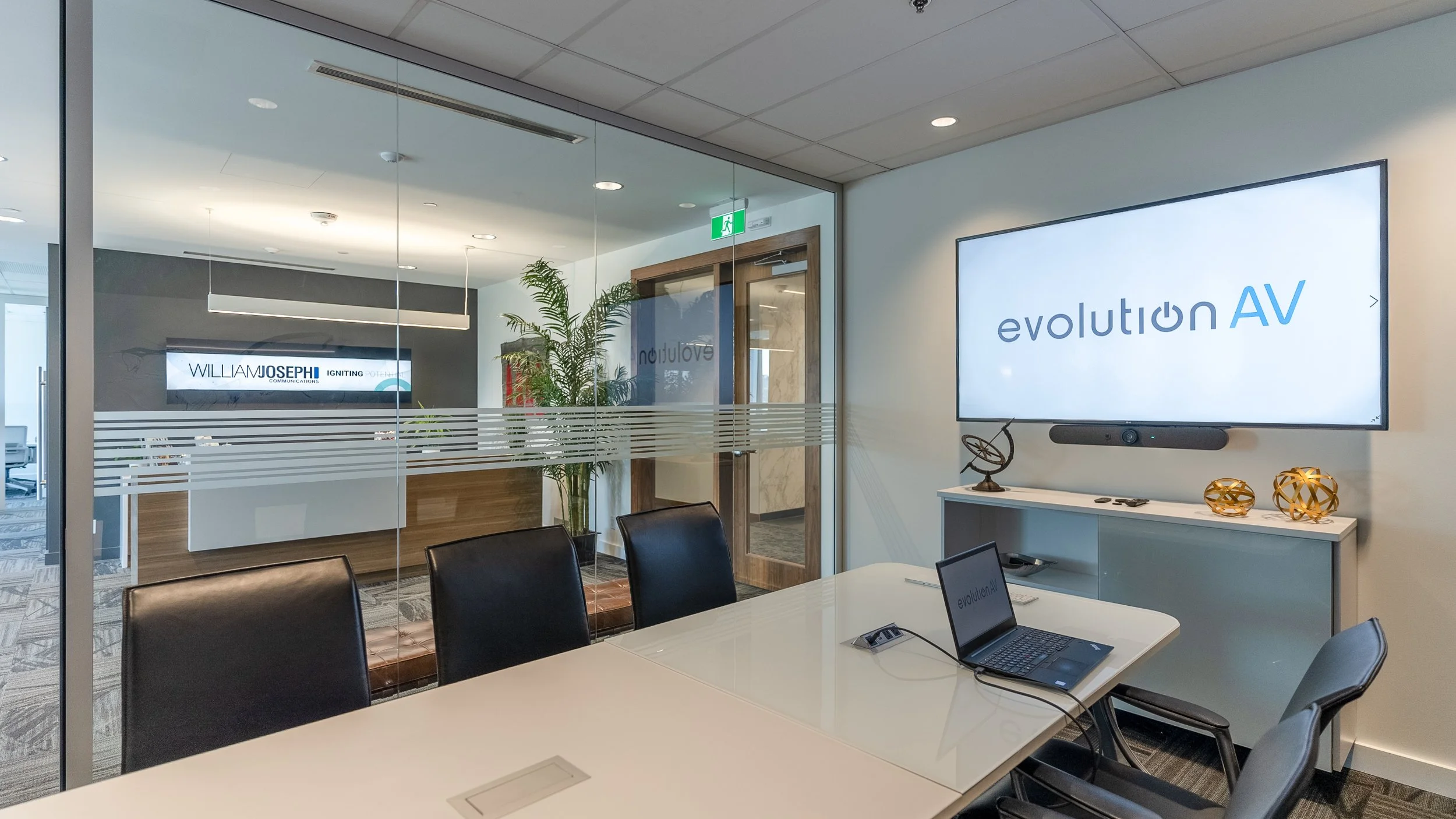3 Key Ingredients To Your Meeting Room AV
Video Conferencing Software
Video conferencing software provides a platform that enables online communication for meetings and seminars, with integrated features such as screen sharing, file sharing, recording and chat. From Zoom, to Microsoft Teams, to Google Meet and Webex, there is no shortage of options, and with so many available, it can be difficult to decide which program will work best for you. Most organizations already used a platform prior to 2020, but with this year presenting challenges that could only be solved by incorporating a dependable video conferencing software into daily routines, many were left to either reevaluate and replace current software or increase the functionality of what had already been installed.
Zoom has established itself as a frontrunner in its field due to the platform’s usability and versatility. It is straightforward to set up, use and manage, and is compatible with most video conferencing equipment. Zoom operates seamlessly with PC, MAC, Linux, iOS and Andriod devices making it a great fit for BYOD (bring your own device) systems, and supports calendar integration with Google Calendar, Office 365 and exchange.
Microsoft Teams is Microsoft’s workstream collaboration plus unified communications platform that combines meetings, chats, calls and file sharing with Office 365 to create a fully functioning, shared workspace. It is a clear choice for businesses already using Microsoft’s suite of applications and when considering the file search and backup capabilities, Teams has proven itself to be a well stacked, all-encompassing platform.
Like Zoom and Teams, Google Meet is a cloud-based collaboration and communication service. It offers the video conferencing features you would expect such as instant messaging, screensharing and online presentations, and is accessible directly through Chrome (and other browsers) without requiring additional plugins. Google Meet works with other meeting solutions too and organizations that use Skype for Business or SIP and H.323 standards (Poly or Cisco, for example) can easily join a meeting hosted by Google through the Pexip Infinity Platform.
Webex by Cisco is a similar product to Zoom, Microsoft Teams and Google Meet and like its competitors is an excellent collaboration tool for meetings and webinars. The software is a particularly good fit for businesses with concerns relating to security as it features Transport Layer Security (TLS), third-party accreditations, encrypted cloud recordings, firewall compatibility, single sign-on and secure scheduling options. Webex supports iOS, Android, and wearable devices, and includes seamless Google and Microsoft calendar integration.
When it comes to software availability, it is important to evaluate your collaborative needs prior to making a decision while considering overall usability, sharing capability, integration limitations, cost and the size of your business. Regardless if your workplace is completely remote, or simply enhanced by video conferencing capabilities, virtual communication is essential for employee engagement and productivity.
BYOD vs One Touch Join
Both Bring Your Own Device (BYOD) and One Touch Join systems offer the ability to create a collaborative workspace. Factors such as the number of users, company size and overall cost should be considered though as they typically determine whether a company requires One Touch, BYOD, or both.
BYOD
A Bring your Own Device (BYOD) system relies on a meeting participant’s own equipment to drive a meeting. As long a user has access to a PC or mobile device, as well as internet connection, they can take part in a meeting, regardless of their location. This solution is compatible with any video conferencing platforms making it versatile and convenient.
This method of communication is popular because it allows participants to use a device they are comfortable with. It is a more cost-effective solution as it alleviates the employer of having to supply a device to each employee. It offers quick and easy information sharing between meeting hosts and attendees, and typically results in increased productivity.
There is a downside to this form of communication, however, as a BYOD solution has the potential to create a more disjointed user experience. Additionally, issues relating to connection may arise and the quality of a meeting can vary depending on the strength of each user’s Wi-Fi.
One Touch Join System
A One Touch Join system relies on a dedicated in-room installation to drive meeting technology. Using a touch panel, a workspace is permanently linked to an internal scheduling system and meetings are initiated simply by pressing the touch panel’s join button.
An advantage of this system is that you do not require a personal device to participate in a meeting. It is an option, but it is not required to initiate and run the software. Additionally, a One Touch Join system has the ability to function as a BYOD system as long as all participants have access to the software platform the One Touch Join system operates with.
The drawback to this, however, is due to the fact that all users are tied to the software platform the One Touch Join system is paired with, less flexibility exists. If a meeting is held involving attendees from outside of a company’s organization, those attendees may be forced to participate using a software they are unfamiliar with. One Touch Join systems are also typically more expensive, making it a less practical option for smaller organizations.
When comparing both options, you need to begin by evaluating whether you require a built-in system, or if a BYOD system is sufficient to meet your needs. If you have a smaller business, regularly collaborate outside standard business hours or are more budget conscious, a BYOD may be the right system for you. If, on the other hand, your company consists of many employees or is equipped with multiple in-person collaborative workspaces, a One Touch Join system may be what you need.
What About Equipment?
You need to ask yourself many questions before you can accurately determine which equipment will best compliment your video conferencing platform and system. If a BYOD system makes the most sense for your business, personal employee devices, a camera and speakers may be enough, but what if you decide that a fully integrated One Touch Join system is what you need to thrive? Here are a few things you should consider for both options:
How big is your meeting space? The size of your workspace determines how complex of a system you will require. If your meeting space accommodates 8 people or less, installing a microphone and camera is likely enough. The LOFT C100 HD Conference Camera, for example, is a great option as it has a microphone built right into the camera and is compatible with all video conferencing applications. If you have a medium size meeting space designed for over 8 people, the Crestron SB1 Smart Soundbar & Camera paired with the Creston Flex UC video conference system kit is a highly recommended solution as it is compatible with both One Touch Join and BYOD systems.
Are your meetings internal, external, or both? Video conferencing used to be more of an internal form of communication for an organization. Now that more businesses are using these systems as a way of staying connected with 3rd-party companies, in addition to their own employees, less businesses are interested in traditional networking hardware and drawn more towards a web-based solution. With a soft codec (web-based) solution, you can easily connect with people outside of your organization as meetings are driven using a cloud-based platform. Regardless if an organization uses Zoom, Teams, Webex etc., if you have access to a PC, you can host a meeting. The Logitech Tap room system or the Crestron Flex MX are both great solutions for organizations who regularity host or participate in meetings outside of their organization because they have the ability to connect with any platform by simply plugging a USB adapter into a laptop.
Are costs a concern? Video conferencing equipment is an investment, especially when considering a complete workplace integration. Many companies already have AV equipment in place when they begin to look for ways to update their communication systems, and there are options available that are designed to not only be compatible, but to enhance what has already been installed. Something as simple as incorporating an Interactive Display into a workspace has the ability to substantially improve the experience of a virtual meeting, and when combined with a cloud-based platform like ZOOM, it offers the power to join and manage a meeting directly by interacting with the display at the front of the room, much like a One Touch Join system. The whiteboarding software that comes installed on LOFT Interactive Displays allows for gesture control (zoom in/out, erase, etc.) and handwriting/shape recognition, and with the simple addition of a video sound bar, like the the LOFT SB100, you can create an all-in-one fully functioning huddle room, without a substantial financial commitment.
Having the ability to collaborate using video conferencing not only boosts productivity, but it also enhances employee engagement during times when in-person interaction may not be possible. Regardless of your budget, the size of your business or your experience with video conferencing, there is a solution available that will increase efficiency and ultimately reduce overall costs.










